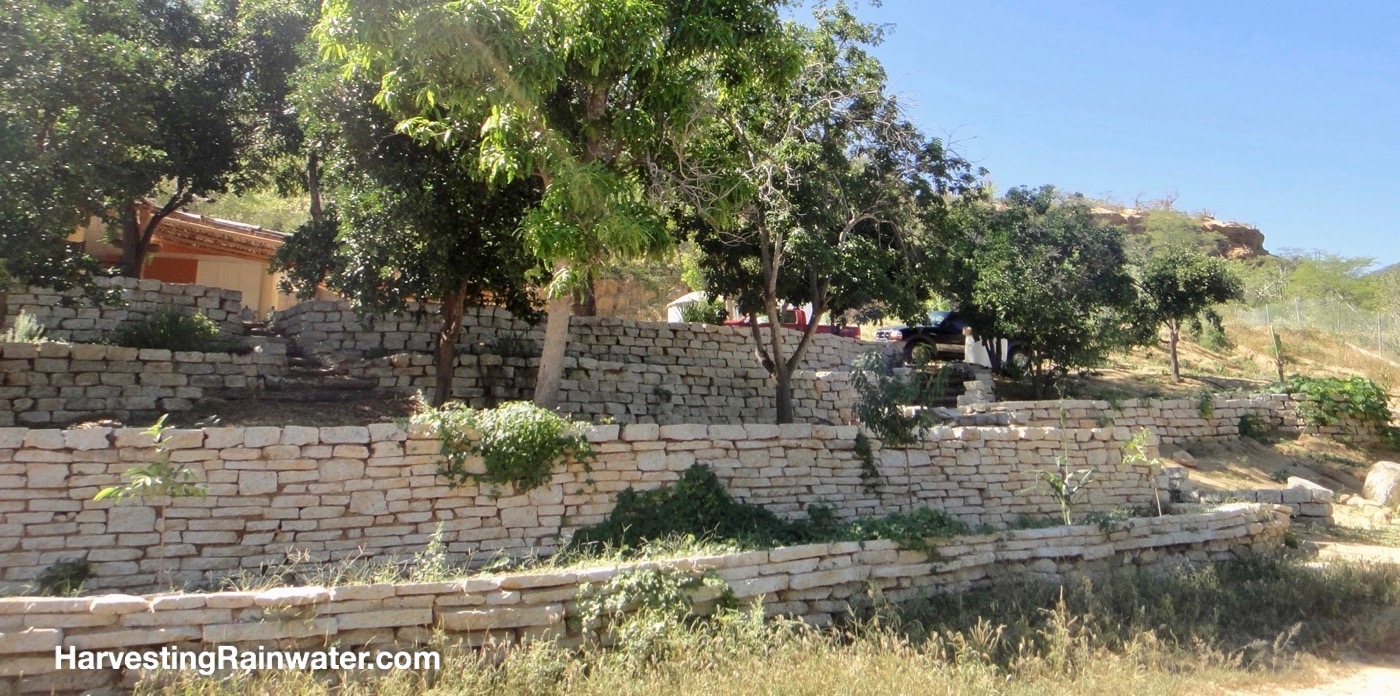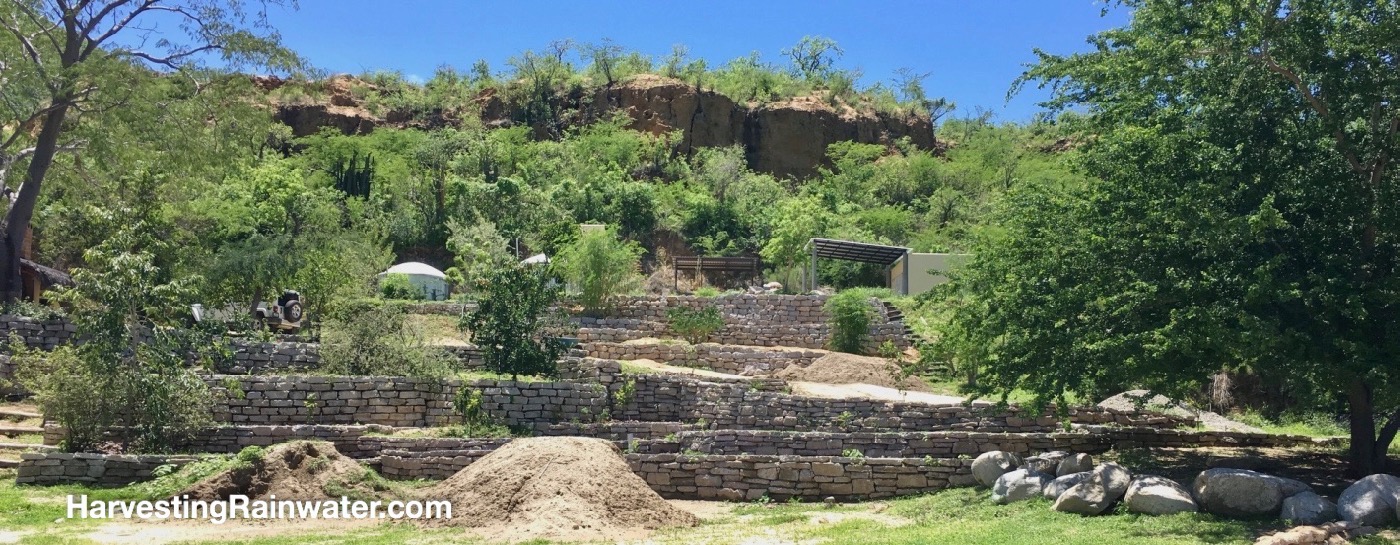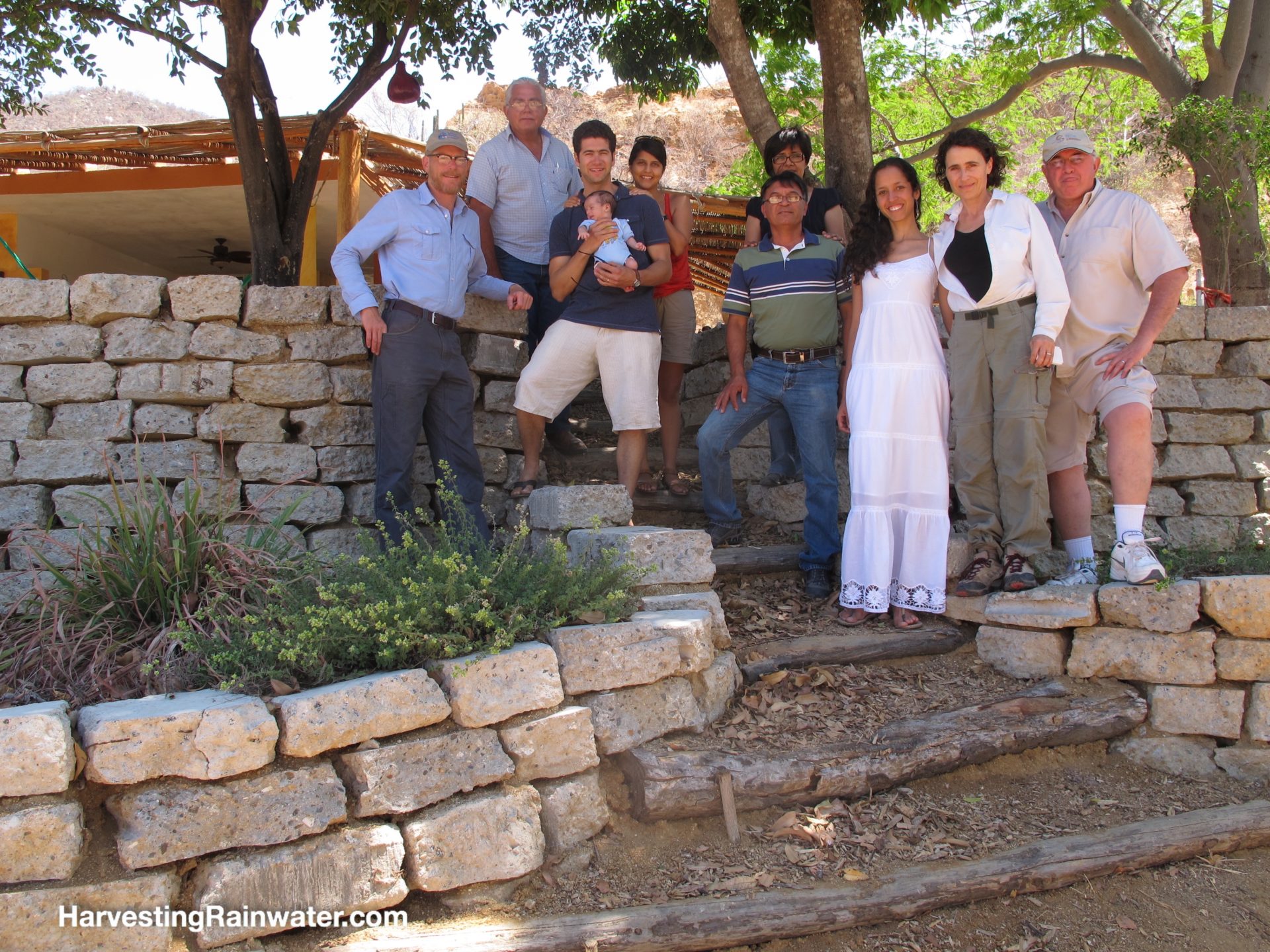Turning Lifeless “Wastes” Into Verdant Water-Harvesting “Urbanite” Terraces in Baja, Mexico and Beyond
By Brad Lancaster © 2019
HarvestingRainwater.com
I love turning “wastes” into resources, thus I love the creative reuse of “urbanite” — the abundant “rock” of broken up chunks of discarded concrete rubble. And I love it even more when the urbanite is used to harvest water and soil in a way that supports the growth of abundant life and greater health.
Such is the case on the ranch of Monica Robinson Bours’ family in Baja, Mexico.
Upon reading the Terraces chapter of my book Rainwater Harvesting for Drylands and Beyond, Volume 2, Monica realized this would be an ideal strategy to stabilize eroding slopes below the ranch house. And being an avid recycler/reuser she knew just where to get the material needed for the terraces’ retaining walls.
Years ago a nearby bridge on the highway had collapsed in a hurricane, and its concrete rubble had just been sitting at the site ever since. Monica knew it could be reused for something, and now she had that thing.
So, Monica and the ranch hands took the rubble back to the ranch, and built a series of beautiful terraces with urbanite retaining walls just below the house. The step-by-step building instructions from the Terraces chapter of my book were their guide. The terraces now stabilize the slope, capture runoff from the house roof and patio, and grow delightful shade for the outdoor gathering area and delicious fruit from the fruit trees (figure 1).

But things did not stop there.
In the nearest city of La Paz, Monica saw the transportation department demolishing large swaths of sidewalk in a road renovation project. So she turned that “waste” into a resource as well by again taking the rubble back to the ranch to build more terraces (figure 2).

Then, following directions in the In-Channel Strategies chapter of Rainwater Harvesting for Drylands and Beyond, Volume 2, Monica and the ranch hands built 1,600 additional structures within the watershed all slowing, spreading, and sinking the flow of water, where before it had too quickly and erosively been flowing away.
All has worked beautifully, and Monica was beaming with well-deserved pride when I had the honor of touring their wonderful work, after collaborating with her and the city of La Paz to create a street runoff water-harvesting demonstration site via a hands-on workshop (more on that in another blog essay to come).

See the new, full-color, revised editions of Brad’s award-winning books
– available a deep discount, direct from Brad:

Volume 1

Volume 2
For more examples of how urbanite has been used to harvest water, such as how the La Loma Development Company in Pasadena, California has pulled over 16 million pounds (7 million kg) of concrete rubble from the waste stream to create exquisite high-craft water harvesting installations throughout Los Angeles, and how lifeless concrete-lined drainageways are being jack-hammered and retrofitted into verdant urbanite cobble infiltrationways, along with instructions enabling you to do the same) — see the newly released, dramatically revised, full-color edition of Rainwater Harvesting for Drylands and Beyond, Volume 2, 2nd Edition
